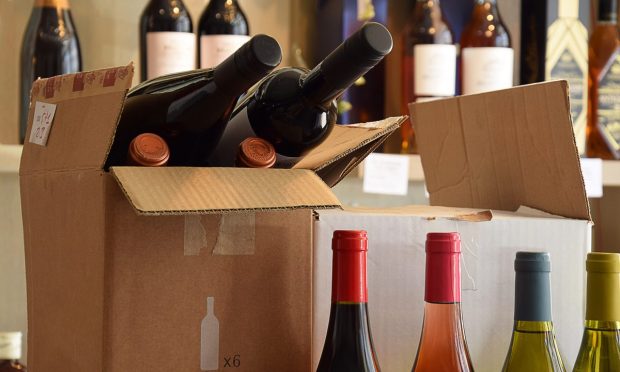On-Demand Alcohol Delivery Options Expand Despite Slow Adoption

Since the start of the pandemic, on-demand delivery has taken over the restaurant industry and gained significant ground in grocery. Yet, facing increased oversight and regulation, alcoholic beverage businesses have been slower to penetrate the bring-it-to-me economy.
It took eight months between Uber’s announcement of its acquisition of on-demand alcoholic beverage delivery marketplace Drizly back in February and the close of the deal in October, and in that time DoorDash was able to add beer, wine and spirits to its marketplace in 20 states, as well as Washington, D.C., Canada and Australia. Meanwhile, Instacart is also competing to meet consumers’ instant alcoholic beverage needs, as are newcomers to the on-demand delivery space such as ultrafast grocery delivery service Jokr.
Read more: DoorDash Adds On-Demand Alcohol Service
Jokr Now Serving Alcohol in NYC With Its 15-Minute Delivery Service
In just the past month or so, access to on-demand beer, wine and spirits delivery has increased dramatically. Last week, DoorDash announced that it was adding alcoholic beverage delivery through Midwestern supermarket chains Meijer and Hy-Vee. In mid-November, Drizly stated that, following a successful 190-store pilot program, it is partnering with 7-Eleven to deliver alcohol in 60 minutes or less from 1,200 of the convenience retailer’s stores.
Related: On-Demand Alcohol Delivery Grows More Competitive, Despite Mutually Beneficial Relationship
The space is growing quickly, but as yet, brands and retailers selling alcohol have not been able to see the success in the online market that other food and beverage businesses have.
“The old adage, ‘if you build it, they will come,’ I think we all recognize isn’t the reality,” Devaraj Southworth, CEO and co-founder of Thirstie, a company that creates eCommerce solutions for alcohol brands, told PYMNTS in an interview.
Still, he predicts that within the next five years, digital channels will generate 10% of all alcohol sales, doubling to 20% within the next 10 years. “And the reason I can say that with relative confidence, and it may be off by a few percentage points, is that in other countries like France and China, that digital penetration is between 10% and 20%.”
For comparison, PYMNTS research from the 2021 Restaurant Readiness Index, created in collaboration with Paytronix, finds that, by last spring, 32% of sales at restaurants with table service were coming from digital orders, as were 47% for quick service restaurants (QSRs). As an additional point of reference, PYMNTS’ study “What Consumers Expect From Their Grocery Shopping Experiences,” created in collaboration with ACI Worldwide, found that 34% of consumers now buy groceries online.
You may also like: Digital Features Can Help Grocers Win Over 43 Percent Of Shoppers
See also: QSRs’ Lagging Loyalty-Reward Investment Hurts Innovation And Sales
A PYMNTS survey from the first quarter of this year, which asked a census-balanced panel of about 2,000 U.S. adults about their alcohol buying habits, found that only 14% of the 1,200 who had purchased alcohol had done so online for same-day delivery. Additionally, the study found that millennials were twice as likely as the general population to take advantage of these on-demand ecommerce channels.
Still, despite this relatively low penetration, the habits are sticky. About half of those taking advantage of these options reported that they were doing so more often than before the start of the pandemic, and 70% stated that they expect to maintain these increases.
